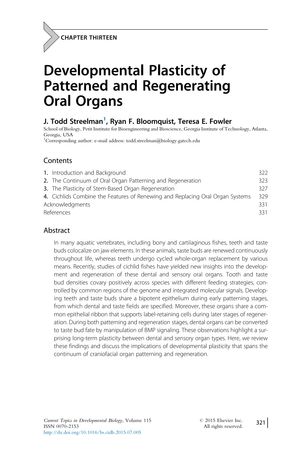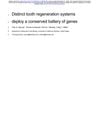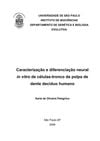Developmental Plasticity of Patterned and Regenerating Oral Organs
January 2015
in “
Current Topics in Developmental Biology
”

TLDR Fish teeth and taste bud densities are linked and can change between types due to shared genetic and molecular factors.
The document from 2015 examines the developmental plasticity and regeneration of oral organs, focusing on the teeth and taste buds of cichlid fishes. It reveals a positive correlation between tooth and taste bud densities across species with varying diets, controlled by shared genomic regions and molecular signals. The study found that these organs originate from a bipotent epithelium and share a common epithelial ribbon that supports label-retaining cells during regeneration. It also demonstrated that BMP signaling manipulation can induce a fate switch from dental to sensory organs, indicating the potential for interconversion between these organ types. The research suggests a continuum in the patterning and regeneration of craniofacial organs and has implications for evolutionary biology and the bioinspired design of oral structures. The study was supported by the U.S. National Institute of Dental and Craniofacial Research.

